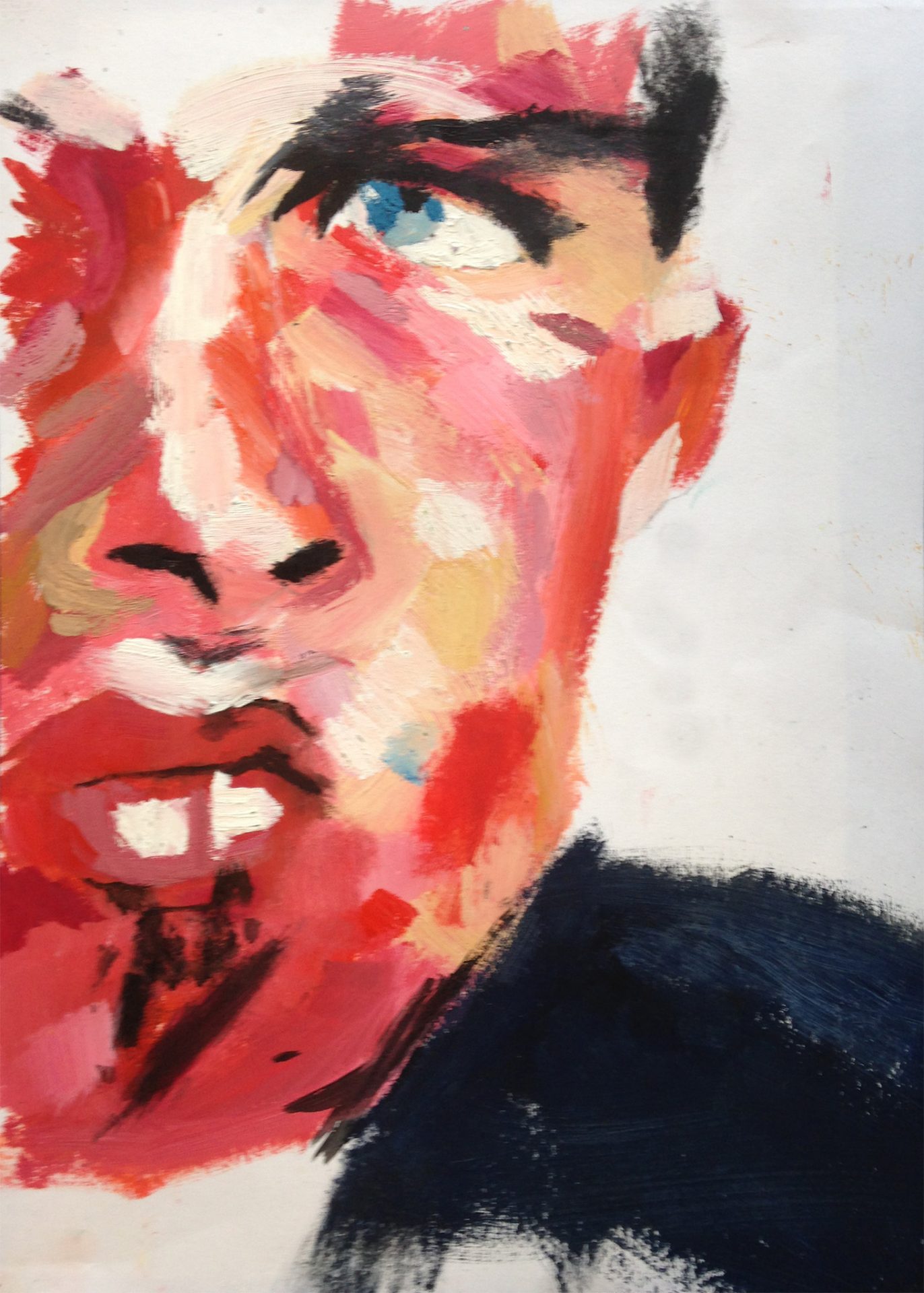Acknowledging emotional reactions in newly diagnosed patients
Inspired by the work of Andrew Salgado, I believe this piece of artwork embodies the emotional distress and sense of confusion provoked by a diagnosis. From the viewpoint of a doctor, the painting depicts a patient’s emotional reaction to his diagnosis and prognosis.
I have depicted the patient with a puzzled and confused expression, highlighting his shock to being clinically labelled with a condition and feeling lost in this new and daunting chapter of his healthcare. In regards to the composition, I actively chose not to paint a full face to suggest the patient is hiding and withdrawing. This disengagement foreshadows him withdrawing from society and a reluctance to accept his diagnosis and prognosis as if he is ashamed of carrying with him an illness/condition.
The rushed and imperfect style of art aims to convey both the physical and biological disruption of the body, whether that is a visible or non-visible condition. Likewise, it highlights the sense of mental chaos and disorder that include stress, anxiety and isolation.
In addition, the rough and static brushstrokes aim to convey the sense of distortion and uncertainty associated with carrying a clinically label and dealing with a poor prognosis. The use of bright and somewhat abstract colours gives a sense of abnormality and unfamiliarity, giving connotations to disease and the invasion of organisms alien to the human body.
Whole Person Care, Year One, 2017

This painting initially attracted me due to the both human and alien aspects of it. It is clearly a man with an expression of worry and confusion; however, the bright colors and abstract brushstrokes give it an abnormal feel. This suggests the man is feeling alienated and is having an out of body experience. After reading the artist’s explanation, I can clearly see how the patient has been given a new (and potentially poor) prognosis. This may lead to the patient feeling unsettled which I feel the artist portrays very clearly. Furthermore, the bright colors of the face contrast with the monochromatic background potentially suggesting a cold, clinical environment. The shoulder of the patient is prominent, suggesting a withdrawn motion, further supported by the patient “hiding” in the frame. This gives an overall image that the patient is uncomfortable. Overall, this is important in understanding a patient’s reaction and how a doctor may deal with this to make a patient feel more comfortable and give effective care.